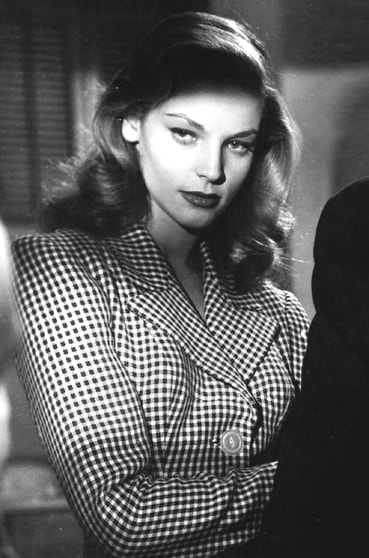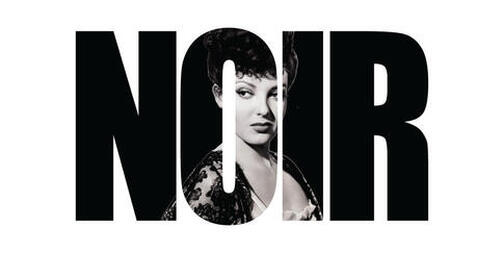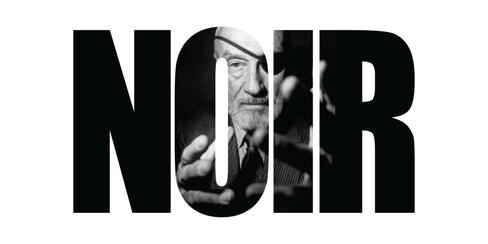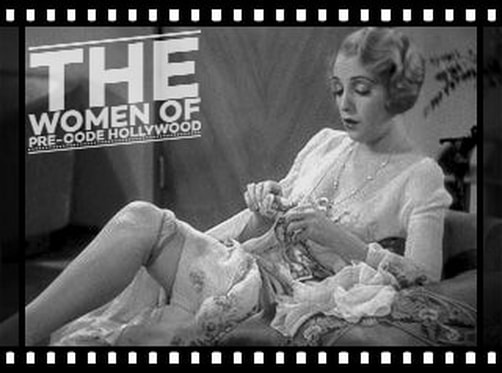LAUREN BACALL
AND FILM NOIR
Lauren Bacall made notable contributions to the film noir genre with her distinctive style and performances. Here are some of her significant roles and films within the film noir genre:
"To Have and Have Not" (1944): Bacall's debut film, directed by Howard Hawks, is often considered a blend of romance and film noir. Her character, Marie "Slim" Browning, exhibits the classic femme fatale qualities, delivering sharp, suggestive dialogue and displaying a seductive allure. Bacall's chemistry with co-star Humphrey Bogart was palpable and set the tone for their subsequent collaborations.
"The Big Sleep" (1946): Based on Raymond Chandler's novel, this film is regarded as a quintessential film noir. Bacall played the role of Vivian Rutledge, a mysterious and alluring woman entangled in a web of crime and deceit. Her exchanges with Bogart's detective character, Philip Marlowe, are filled with tension and innuendo, contributing to the film's atmospheric and complex narrative.
"Dark Passage" (1947): Bacall reunited with Bogart in this film noir, where she portrayed Irene Jansen, a sympathetic artist who helps the protagonist (played by Bogart) in his quest for justice. Bacall's character provides both emotional support and a sense of danger, adding depth to the story's noir elements.
"Key Largo" (1948): In this crime thriller directed by John Huston, Bacall starred as Nora Temple, a strong-willed woman caught up in a tense hostage situation during a hurricane. Her performance showcases her ability to balance vulnerability and resilience, contributing to the film's claustrophobic atmosphere and suspenseful plot.
Bacall's contribution to film noir extended beyond these films. Her deep, smoky voice, sultry gaze, and confident presence made her a natural fit for the genre's femme fatale archetype. Bacall's performances in these films added a layer of complexity and intrigue, enhancing the overall allure and suspense that define film noir classics.
She remains celebrated as one of the iconic actresses of the film noir era, leaving an indelible mark on the genre with her talent, style, and memorable roles.
"To Have and Have Not" (1944): Bacall's debut film, directed by Howard Hawks, is often considered a blend of romance and film noir. Her character, Marie "Slim" Browning, exhibits the classic femme fatale qualities, delivering sharp, suggestive dialogue and displaying a seductive allure. Bacall's chemistry with co-star Humphrey Bogart was palpable and set the tone for their subsequent collaborations.
"The Big Sleep" (1946): Based on Raymond Chandler's novel, this film is regarded as a quintessential film noir. Bacall played the role of Vivian Rutledge, a mysterious and alluring woman entangled in a web of crime and deceit. Her exchanges with Bogart's detective character, Philip Marlowe, are filled with tension and innuendo, contributing to the film's atmospheric and complex narrative.
"Dark Passage" (1947): Bacall reunited with Bogart in this film noir, where she portrayed Irene Jansen, a sympathetic artist who helps the protagonist (played by Bogart) in his quest for justice. Bacall's character provides both emotional support and a sense of danger, adding depth to the story's noir elements.
"Key Largo" (1948): In this crime thriller directed by John Huston, Bacall starred as Nora Temple, a strong-willed woman caught up in a tense hostage situation during a hurricane. Her performance showcases her ability to balance vulnerability and resilience, contributing to the film's claustrophobic atmosphere and suspenseful plot.
Bacall's contribution to film noir extended beyond these films. Her deep, smoky voice, sultry gaze, and confident presence made her a natural fit for the genre's femme fatale archetype. Bacall's performances in these films added a layer of complexity and intrigue, enhancing the overall allure and suspense that define film noir classics.
She remains celebrated as one of the iconic actresses of the film noir era, leaving an indelible mark on the genre with her talent, style, and memorable roles.
VIDEO TRIBUTE:
Lauren Bacall

Lauren Bacall, born Betty Joan Perske on September 16, 1924, was an American actress and singer. She was known for her distinctive husky voice, sultry looks, and magnetic presence, which made her one of the leading ladies of Hollywood's Golden Age. Bacall's career spanned several decades, during which she achieved both critical acclaim and popular success.
Bacall was born in New York City to Jewish parents. She initially aspired to be a dancer but turned to acting after receiving positive feedback in school plays. In 1942, while still a teenager, Bacall caught the attention of film director Howard Hawks, who cast her in her breakthrough role in the film "To Have and Have Not" (1944), opposite Humphrey Bogart. The film marked the beginning of a lifelong partnership and romance between Bacall and Bogart, both on and off-screen.
Bacall's performance in "To Have and Have Not" introduced her unique blend of confidence, intelligence, and sensuality, earning her acclaim and the admiration of audiences. Her smoky voice and "The Look" – her sultry gaze – became her trademarks. Bacall and Bogart went on to star in several successful films together, including "The Big Sleep" (1946), "Dark Passage" (1947), and "Key Largo" (1948).
During the 1950s, Bacall continued to work in films, showcasing her talent and versatility. She appeared in notable movies such as "Young Man with a Horn" (1950), "How to Marry a Millionaire" (1953), and "Written on the Wind" (1956), which earned her a Golden Globe Award for Best Supporting Actress.
In addition to her film career, Bacall ventured into stage acting and achieved success on Broadway. She received Tony Awards for her performances in the plays "Applause" (1970) and "Woman of the Year" (1981). Bacall also made appearances in television shows, including her Emmy Award-winning performance in an episode of "The Sopranos."
Throughout her life, Bacall remained a respected and influential figure in the entertainment industry. Her contributions to film and stage earned her numerous accolades, including an honorary Academy Award in 2009 for her "central place in the golden age of motion pictures."
Lauren Bacall passed away on August 12, 2014, at the age of 89 in New York City. She left behind a lasting legacy as a talented actress, an embodiment of elegance and glamour, and an enduring symbol of classic Hollywood. Her distinctive voice, seductive presence, and memorable performances continue to captivate audiences to this day.
Bacall was born in New York City to Jewish parents. She initially aspired to be a dancer but turned to acting after receiving positive feedback in school plays. In 1942, while still a teenager, Bacall caught the attention of film director Howard Hawks, who cast her in her breakthrough role in the film "To Have and Have Not" (1944), opposite Humphrey Bogart. The film marked the beginning of a lifelong partnership and romance between Bacall and Bogart, both on and off-screen.
Bacall's performance in "To Have and Have Not" introduced her unique blend of confidence, intelligence, and sensuality, earning her acclaim and the admiration of audiences. Her smoky voice and "The Look" – her sultry gaze – became her trademarks. Bacall and Bogart went on to star in several successful films together, including "The Big Sleep" (1946), "Dark Passage" (1947), and "Key Largo" (1948).
During the 1950s, Bacall continued to work in films, showcasing her talent and versatility. She appeared in notable movies such as "Young Man with a Horn" (1950), "How to Marry a Millionaire" (1953), and "Written on the Wind" (1956), which earned her a Golden Globe Award for Best Supporting Actress.
In addition to her film career, Bacall ventured into stage acting and achieved success on Broadway. She received Tony Awards for her performances in the plays "Applause" (1970) and "Woman of the Year" (1981). Bacall also made appearances in television shows, including her Emmy Award-winning performance in an episode of "The Sopranos."
Throughout her life, Bacall remained a respected and influential figure in the entertainment industry. Her contributions to film and stage earned her numerous accolades, including an honorary Academy Award in 2009 for her "central place in the golden age of motion pictures."
Lauren Bacall passed away on August 12, 2014, at the age of 89 in New York City. She left behind a lasting legacy as a talented actress, an embodiment of elegance and glamour, and an enduring symbol of classic Hollywood. Her distinctive voice, seductive presence, and memorable performances continue to captivate audiences to this day.
quotes:
"I never believed marriage was a lasting institution. I thought that to be married for five years was to be married forever."
"I was this flat-chested, big-footed, lanky thing."
[on Humphrey Bogart] Was he tough? "In a word, no. Bogey was truly a gentle soul."
[on filming her most famous scene, in To Have and Have Not (1944)] "My hand was shaking, my head was shaking, the cigarette was shaking, I was mortified. The harder I tried to stop, the more I shook. I realized that one way to hold my trembling head still was to keep it down, chin low, almost to my chest, and eyes up at Bogart. It worked and turned out to be the beginning of The Look."
- Lauren Bacall
trivia:
At the funeral for her husband, Humphrey Bogart, she put a whistle in his coffin. It was a reference to the famous line she says to him in their first film together To Have and Have Not (1944): "You know how to whistle, don't you? You just put your lips together and blow".
When Howard Hawks discovered her, he gave her the choice to work with either Cary Grant or Humphrey Bogart. Bacall was very tempted to work with Grant, but Hawks ended up casting her with Bogart in To Have and Have Not (1944), and one of Hollywood's greatest romances was started.
She was dismissed by Howard Hawks because she had a high nasal voice, but she spent two weeks developing her voice and, when she came back to visit Hawks two weeks later, she had a deep husky voice.
According to her autobiography, "By Myself and Then Some", Bacall lost her virginity to future husband Humphrey Bogart at age 19 when they began an affair in February 1944.
Her screen persona was totally based and modeled after Howard Hawks's wife, Slim. She even uses her name in To Have and Have Not (1944).
Shortly after Humphrey Bogart's death, she announced her engagement to Frank Sinatra to the press. Sinatra promptly backed out.
When Howard Hawks discovered her, he gave her the choice to work with either Cary Grant or Humphrey Bogart. Bacall was very tempted to work with Grant, but Hawks ended up casting her with Bogart in To Have and Have Not (1944), and one of Hollywood's greatest romances was started.
She was dismissed by Howard Hawks because she had a high nasal voice, but she spent two weeks developing her voice and, when she came back to visit Hawks two weeks later, she had a deep husky voice.
According to her autobiography, "By Myself and Then Some", Bacall lost her virginity to future husband Humphrey Bogart at age 19 when they began an affair in February 1944.
Her screen persona was totally based and modeled after Howard Hawks's wife, Slim. She even uses her name in To Have and Have Not (1944).
Shortly after Humphrey Bogart's death, she announced her engagement to Frank Sinatra to the press. Sinatra promptly backed out.




